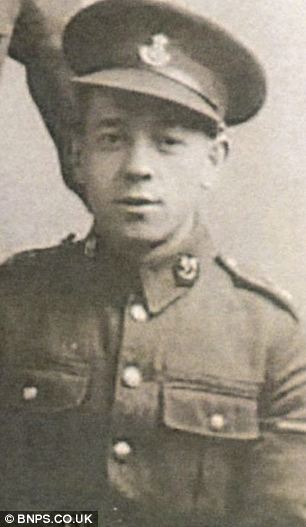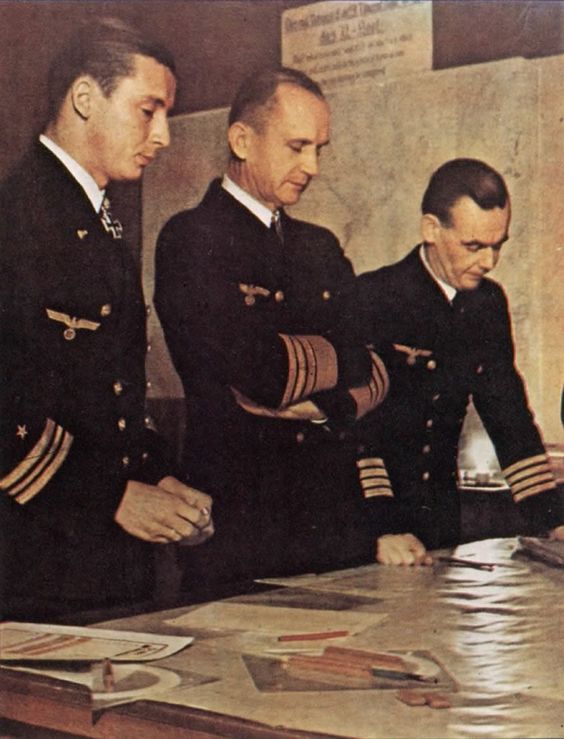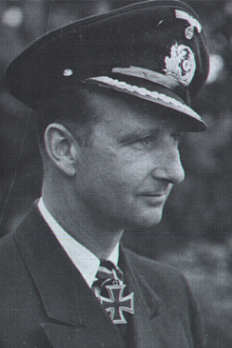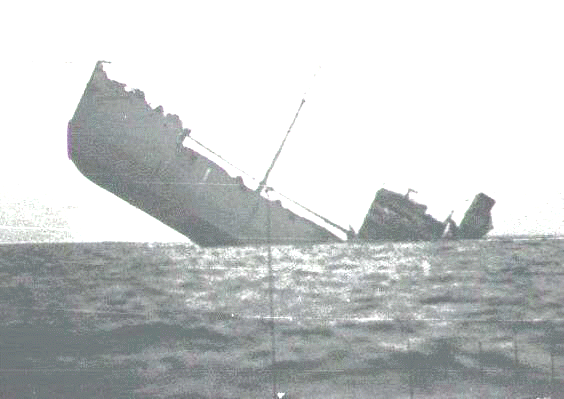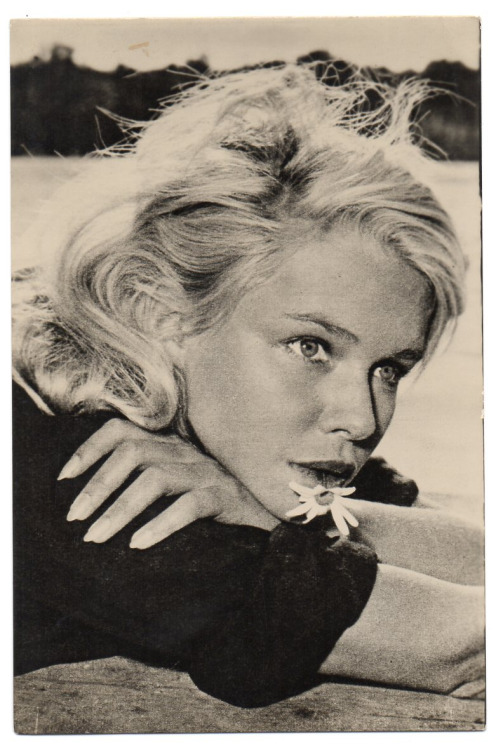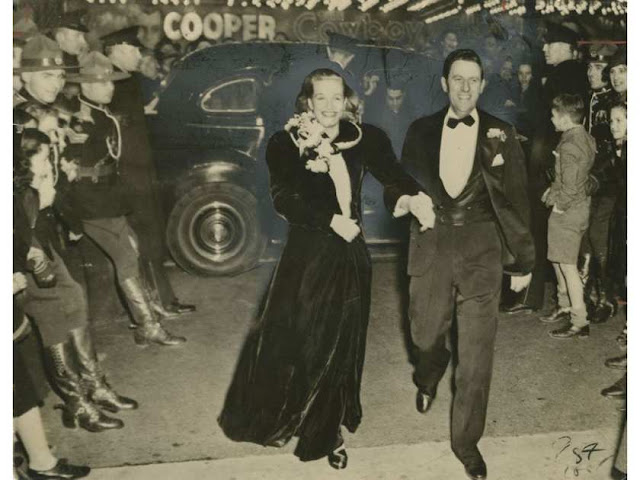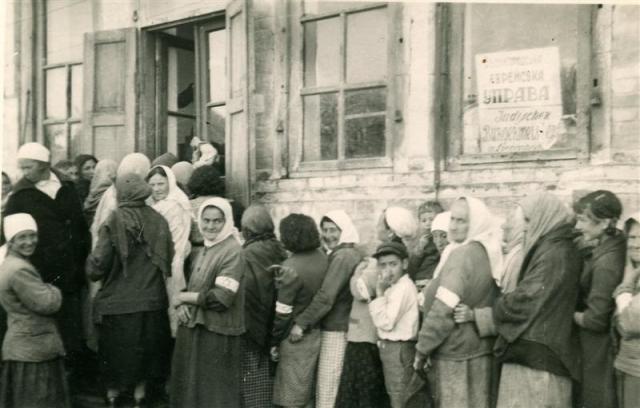Sunday 20 October 1940
 |
| Spanish leader Francisco Franco with Heinrich Himmler in Madrid, 20 October 1940 (Bundesarchiv Bild 183-L15327). |
Battle of Britain: The weather continues to be poor, but is just good enough for a few medium-sized Luftwaffe operations. The Luftwaffe continues to concentrate on fighter-bomber (Jabo) attacks on southern England, with only occasional daylight bomber raids.
The Jabos mount small-scale attacks throughout the morning, but cause little damage and few casualties. The RAF sends up 8 Squadrons to challenge them, and both sides take some losses.
After lunchtime, at 13:00 a 50-plane Jabo raid crosses Dover for London. Once again, the RAF sends up a handful of Squadrons to battle them. Again both sides take losses.
Around 14:30, another Jabo raid crosses over Maidstone. However, it peters out after the RAF intercepts, and from then on there are only scattered skirmishes until nightfall.
After dark, the Luftwaffe sends about 300 bombers against London, Manchester, the Midlands, East Anglia, and Birmingham. The bulk of the attacks are before midnight. Coventry, home of the Armstrong-Siddeley and Singer Motor Works, also takes damage. The Luftwaffe drops mines along the coast of southern and eastern England.
In London, there is a cultural tragedy when The British Museum Newspaper Repository building goes up in flames, taking with it 6000 volumes of 19th Century literary works. The rail stations at Euston, Waterloo and King William Street are hit.
The RAF No. 219 Squadron gets some night fighters in the air, but the Beaufighter interceptors are difficult for the crews to learn. The radar equipment in particular poses problems. However, the RAF believes that the night fighters hold great promise.
For the day, the Luftwaffe loses about ten planes and the RAF only a handful. The best news for the RAF is that it does not lose any pilots. Luftwaffe losses, of course, usually do lead to lost pilots, either through death or capture.
The Italians are now ready to begin operations against England from their base in Belgium. The planes include BR20 bombers, Cant Z1007 long-range bombers, G50 fighters, and CR42 fighters. None of them are up to the standards of the fierce Channel Front.
There is an exchange of coastal gunfire at Hellfire Corner (Straits of Dover) which does not achieve much. The German shells often do not explode, and today 15 out of 20 fired (some sources say 50 are fired) turn out to be duds.
Werner Mölders, the leading ace of the war, is promoted to Oberstleutnant.
Oberleutnant Helmut Wick becomes Major Wick and assumes command as Kommodore of JG 2, replacing Major Wolfgang Schellmann. A top Luftwaffe scorer, Wick says:
Battle of the Atlantic: The slaughter of Convoy HX 79 continues through the night of 19/20 October. I go through that battle in the entry for the 19th. Ships sunk in the early hours of the 20th from Convoy HX 79 (150 miles southwest of Rockall) include:\
U-124 (Kptl. Georg-Wilhelm Schulz) torpedoes and sinks 5810-ton Norwegian freighter Cubano. There are 30-33 survivors (accounts vary) and two crew perish. The Cubano takes its time sinking, so the lifeboats remain with the tanker for some time due to heavy seas and wind in hopes of perhaps reboarding it. Other ships pass the lifeboats but refuse to stop to pick them up, perhaps for fear of falling prey to the same U-boat. The men in the lifeboats also rescue the sole survivor from the Sulaco, who is on a raft. Ultimately, the Cubano sinks and the boats head toward Scotland but are picked up along the way by Royal Canadian Navy destroyer Saguenay.
U-124 torpedoes and sinks 5389-ton British freighter Sulaco. There is one survivor and 66 men perish.
Italian submarine Malaspina also is in the vicinity of Convoy OB 229, which is somewhat north of its operational zone. It spots a tanker dispersed from the convoy but fails to sink it.
As if those the U-boat spree is not enough, the Luftwaffe also gets involved. It attacks Convoy OA 232 17 km off Girdleness, Aberdeenshire in the North Sea and torpedoes a ship. British 4876 ton United Africa Company freighter Conakrian is badly damaged and abandoned by its crew. The ship remains afloat long enough to be taken in tow by destroyer HMS Cleveland. It reaches port and is beached at Bridge of Don, Aberdeenshire. Everybody survives and the ship can be refloated and repaired.
The Luftwaffe also damages 7108-ton British freighter City of Roubaix at Alexandria Dock, Liverpool.
Convoys OA 232 and FS 315 depart from Methil, Convoy FN 315 departs from Southend, Convoy HX 82 departs from Halifax, Convoy BS 6B departs from Port Sudan, Convoy BS 7 departs from Suez, Convoy BM 2 departs from Bombay.
Royal Navy corvette HMS Crocus (K 49, Lt. Commander Edward Wheeler) is commissioned.
Battle of the Mediterranean: Papers retrieved by the Royal Navy from (later sunk) Italian submarine Durbo are used to direct a force of Royal Navy destroyers after another submarine mentioned in them. This leads to a successful interception. An Italian submarine fires a torpedo at Royal Navy destroyer HMS Forester north of Melilla, Spanish Morocco. Royal Navy destroyers HMS Gallant, Griffin and Hotspur spot Italian submarine Lafolè. The destroyers depth-charge, ram and finally sink the Italian sub. There are nine survivors taken aboard the British ships as POWs, along with 37 dead. The Hotspur, meanwhile, takes damage to its bow from the ramming and heads for Gibraltar for lengthy repairs there and at Malta.
The RAF bombs the Italian depot of Tobruk. The Italian Air Force bombs Cairo for the first time from bases in East Africa. In addition, the Italians send a group of bombers on an epic 4506 km journey from the Dodecanese Islands to bomb oil refinery targets in Bahrain and Saudi Arabia and then land in Eritrea. The refineries are American-operated in the British Protectorate of Bahrain. They cause little or no damage to the refineries.
Italian destroyers attack Convoy BN 7 in the Red Sea. They lose destroyer Francesco Nullo, which is beached and subsequently destroyed by Blenheim bombers. The Royal Navy also has one of its destroyers, HMS Kimberley, damaged by coastal guns. It is towed to Port Sudan.
At Malta, Governor Dobbie sends a request to the War Office for a thousand tons of meat. This is to ensure that the island has sufficient supplies to withstand a siege. The supplies must make the long, perilous route around Africa, which takes about three months from start to arrival in Malta.
Battle of the Pacific: German raiders Orion and Komet complete their re-supply from the Kulmerland.
He privately confides that achieving this would require a "grandiose fraud" wherein governments willingly act against their own countries' interests. Hitler has little to offer aside from his personal charm, and the governments of both countries have indicated at best lukewarm support for a united military front.
Ribbentrop's train, "Heinrich," also leaves. He is carrying a German-Italian-French protocol which is somewhat similar to the Tripartite Agreement between Germany, Italy, and Japan. It would guarantee France's "rightful place in Europe" in exchange for her assistance in the prosecution of the war against the British. The bottom line is that Hitler wants both countries to openly declare war on England. While both are known to be pro-German governments to one extent or another, inducing them to actually go to war and ally openly with Germany (as opposed to covertly, as with Spain, or being a sort of temporary co-belligerent at times, as with Vichy France) is asking a lot.
The trains travel through Aachen, Namur, Yvoir, and Vendome on the way to the first stop, Montoire. Heinrich Himmler already is in Madrid meeting with Francisco Franco and Foreign Minister Serrano Suner to pave the way for Franco's upcoming meeting with Hitler at Hendaye. There remain to this day some loose ends from this trip which have yet to be resolved completely, as discussed below.
Anglo/French Relations: Both sides are courting Vichy France. Marshal Petain secretly notifies Whitehall that he will send emissary Louis Rougier to London via Lisbon to discuss their relationship.
British Military: Brigadier Colin Gubbins, who essentially has been in charge of special operations in Norway and subsequently, joins Special Operations Executive.
US Military: The Greenslade Board, touring the British bases obtained in the destroyers-for-bases deal, arrives in San Juan, Puerto Rico aboard the USS St. Louis.
Oiler USS Ramapo arrives at Guam and offloads district patrol craft YP-16 and YP-17 at Apra Harbor. Guam is the subject of fierce debate within the US government as to whether its facilities should be upgraded to resist Japanese aggression, or whether it is indefensible. A lot of money is being poured into Guam.
Australia: Troop Convoy US 6, including the Queen Mary and Aquitania, are heading from Sydney to the Middle East Command at Suez, with the first stop at Freemantle.
Future History: Poet Robert Pinsky is born in Long Branch, New Jersey.
October 1940
October 2, 1940: Hitler's Polish Plans
October 3, 1940: British Cabinet Shakeup
October 4, 1940: Brenner Pass Meeting
October 5, 1940: Mussolini Alters Strategy
October 6, 1940: Iron Guard Marches
October 7, 1940: McCollum Memo
October 8, 1940: Germans in Romania
October 9, 1940: John Lennon Arrives
October 10, 1940: Führer-Sofortprogramm
October 11, 1940: E-Boats Attack!
October 12, 1940: Sealion Cancelled
October 13, 1940: New World Order
October 14, 1940: Balham Tragedy
October 15, 1940: Mussolini Targets Greece
October 16, 1940: Japanese Seek Oil
October 17, 1940: RAF Shakeup
October 18, 1940: Convoy SC-7 Catastrophe
October 19, 1940: Convoy HX-79 Catastrophe
October 20, 1940: Convoy OB-229 Disaster
October 21, 1940: This Evil Man Hitler
October 22, 1940: Aktion Wagner-Burckel
October 23, 1940: Hitler at Hendaye
October 24, 1940: Hitler and Petain
October 25, 1940: Petain Woos Churchill
October 26, 1940: Empress of Britain Attack
October 27, 1940: Greece Rejects Italian Demands
October 28, 1940: Oxi Day
October 29, 1940: US Draft Begins
October 30, 1940: RAF Area Bombing Authorized
October 31, 1940: End of Battle of Britain
2020
The Jabos mount small-scale attacks throughout the morning, but cause little damage and few casualties. The RAF sends up 8 Squadrons to challenge them, and both sides take some losses.
After lunchtime, at 13:00 a 50-plane Jabo raid crosses Dover for London. Once again, the RAF sends up a handful of Squadrons to battle them. Again both sides take losses.
Around 14:30, another Jabo raid crosses over Maidstone. However, it peters out after the RAF intercepts, and from then on there are only scattered skirmishes until nightfall.
After dark, the Luftwaffe sends about 300 bombers against London, Manchester, the Midlands, East Anglia, and Birmingham. The bulk of the attacks are before midnight. Coventry, home of the Armstrong-Siddeley and Singer Motor Works, also takes damage. The Luftwaffe drops mines along the coast of southern and eastern England.
In London, there is a cultural tragedy when The British Museum Newspaper Repository building goes up in flames, taking with it 6000 volumes of 19th Century literary works. The rail stations at Euston, Waterloo and King William Street are hit.
The RAF No. 219 Squadron gets some night fighters in the air, but the Beaufighter interceptors are difficult for the crews to learn. The radar equipment in particular poses problems. However, the RAF believes that the night fighters hold great promise.
For the day, the Luftwaffe loses about ten planes and the RAF only a handful. The best news for the RAF is that it does not lose any pilots. Luftwaffe losses, of course, usually do lead to lost pilots, either through death or capture.
The Italians are now ready to begin operations against England from their base in Belgium. The planes include BR20 bombers, Cant Z1007 long-range bombers, G50 fighters, and CR42 fighters. None of them are up to the standards of the fierce Channel Front.
There is an exchange of coastal gunfire at Hellfire Corner (Straits of Dover) which does not achieve much. The German shells often do not explode, and today 15 out of 20 fired (some sources say 50 are fired) turn out to be duds.
Werner Mölders, the leading ace of the war, is promoted to Oberstleutnant.
Oberleutnant Helmut Wick becomes Major Wick and assumes command as Kommodore of JG 2, replacing Major Wolfgang Schellmann. A top Luftwaffe scorer, Wick says:
As long as I can shoot down the enemy, adding to the honor of the ‘Richthofen’ Geschwader and the success of the Fatherland, I will be a happy man. I want to fight and die fighting, taking with me as many of the enemy as possible.Oblt. Hans Philipp, 4./JG 54, claims 2 Hurricanes to reach 20 victories.
Battle of the Atlantic: The slaughter of Convoy HX 79 continues through the night of 19/20 October. I go through that battle in the entry for the 19th. Ships sunk in the early hours of the 20th from Convoy HX 79 (150 miles southwest of Rockall) include:\
- British 8230 ton tanker Caprella (by U-100) (1 dead, 52 survivors);
- British 5452 ton freighter Loch Lomond (by U-100) (1 dead, 39 survivors);
- British 6218 ton tanker Sitala (by U-100) (1 dead, 43 survivors);
- Swedish 9965 ton tanker Janus (by U-46) (4 dead, 33 survivors);
- British 5185 ton freighter La Estancia (by U-47) (1 dead, 33 survivors);
- British 5026 ton freighter Whitford Point (by U-47) (37 dead, 2 survivors).
U-124 (Kptl. Georg-Wilhelm Schulz) torpedoes and sinks 5810-ton Norwegian freighter Cubano. There are 30-33 survivors (accounts vary) and two crew perish. The Cubano takes its time sinking, so the lifeboats remain with the tanker for some time due to heavy seas and wind in hopes of perhaps reboarding it. Other ships pass the lifeboats but refuse to stop to pick them up, perhaps for fear of falling prey to the same U-boat. The men in the lifeboats also rescue the sole survivor from the Sulaco, who is on a raft. Ultimately, the Cubano sinks and the boats head toward Scotland but are picked up along the way by Royal Canadian Navy destroyer Saguenay.
U-124 torpedoes and sinks 5389-ton British freighter Sulaco. There is one survivor and 66 men perish.
Italian submarine Malaspina also is in the vicinity of Convoy OB 229, which is somewhat north of its operational zone. It spots a tanker dispersed from the convoy but fails to sink it.
As if those the U-boat spree is not enough, the Luftwaffe also gets involved. It attacks Convoy OA 232 17 km off Girdleness, Aberdeenshire in the North Sea and torpedoes a ship. British 4876 ton United Africa Company freighter Conakrian is badly damaged and abandoned by its crew. The ship remains afloat long enough to be taken in tow by destroyer HMS Cleveland. It reaches port and is beached at Bridge of Don, Aberdeenshire. Everybody survives and the ship can be refloated and repaired.
The Luftwaffe also damages 7108-ton British freighter City of Roubaix at Alexandria Dock, Liverpool.
Convoys OA 232 and FS 315 depart from Methil, Convoy FN 315 departs from Southend, Convoy HX 82 departs from Halifax, Convoy BS 6B departs from Port Sudan, Convoy BS 7 departs from Suez, Convoy BM 2 departs from Bombay.
Royal Navy corvette HMS Crocus (K 49, Lt. Commander Edward Wheeler) is commissioned.
 |
| Charlie Chaplin as Herr Hynkel in "The Great Dictator," currently playing in US theaters. |
The RAF bombs the Italian depot of Tobruk. The Italian Air Force bombs Cairo for the first time from bases in East Africa. In addition, the Italians send a group of bombers on an epic 4506 km journey from the Dodecanese Islands to bomb oil refinery targets in Bahrain and Saudi Arabia and then land in Eritrea. The refineries are American-operated in the British Protectorate of Bahrain. They cause little or no damage to the refineries.
Italian destroyers attack Convoy BN 7 in the Red Sea. They lose destroyer Francesco Nullo, which is beached and subsequently destroyed by Blenheim bombers. The Royal Navy also has one of its destroyers, HMS Kimberley, damaged by coastal guns. It is towed to Port Sudan.
At Malta, Governor Dobbie sends a request to the War Office for a thousand tons of meat. This is to ensure that the island has sufficient supplies to withstand a siege. The supplies must make the long, perilous route around Africa, which takes about three months from start to arrival in Malta.
Battle of the Pacific: German raiders Orion and Komet complete their re-supply from the Kulmerland.
He privately confides that achieving this would require a "grandiose fraud" wherein governments willingly act against their own countries' interests. Hitler has little to offer aside from his personal charm, and the governments of both countries have indicated at best lukewarm support for a united military front.
Ribbentrop's train, "Heinrich," also leaves. He is carrying a German-Italian-French protocol which is somewhat similar to the Tripartite Agreement between Germany, Italy, and Japan. It would guarantee France's "rightful place in Europe" in exchange for her assistance in the prosecution of the war against the British. The bottom line is that Hitler wants both countries to openly declare war on England. While both are known to be pro-German governments to one extent or another, inducing them to actually go to war and ally openly with Germany (as opposed to covertly, as with Spain, or being a sort of temporary co-belligerent at times, as with Vichy France) is asking a lot.
The trains travel through Aachen, Namur, Yvoir, and Vendome on the way to the first stop, Montoire. Heinrich Himmler already is in Madrid meeting with Francisco Franco and Foreign Minister Serrano Suner to pave the way for Franco's upcoming meeting with Hitler at Hendaye. There remain to this day some loose ends from this trip which have yet to be resolved completely, as discussed below.
Anglo/French Relations: Both sides are courting Vichy France. Marshal Petain secretly notifies Whitehall that he will send emissary Louis Rougier to London via Lisbon to discuss their relationship.
 |
| Dalby Olympic Swimming Pool, 20 October 1940. Queensland State Archives, Digital Image ID 506. |
US Military: The Greenslade Board, touring the British bases obtained in the destroyers-for-bases deal, arrives in San Juan, Puerto Rico aboard the USS St. Louis.
Oiler USS Ramapo arrives at Guam and offloads district patrol craft YP-16 and YP-17 at Apra Harbor. Guam is the subject of fierce debate within the US government as to whether its facilities should be upgraded to resist Japanese aggression, or whether it is indefensible. A lot of money is being poured into Guam.
Australia: Troop Convoy US 6, including the Queen Mary and Aquitania, are heading from Sydney to the Middle East Command at Suez, with the first stop at Freemantle.
Future History: Poet Robert Pinsky is born in Long Branch, New Jersey.
October 1940
October 2, 1940: Hitler's Polish Plans
October 3, 1940: British Cabinet Shakeup
October 4, 1940: Brenner Pass Meeting
October 5, 1940: Mussolini Alters Strategy
October 6, 1940: Iron Guard Marches
October 7, 1940: McCollum Memo
October 8, 1940: Germans in Romania
October 9, 1940: John Lennon Arrives
October 10, 1940: Führer-Sofortprogramm
October 11, 1940: E-Boats Attack!
October 12, 1940: Sealion Cancelled
October 13, 1940: New World Order
October 14, 1940: Balham Tragedy
October 15, 1940: Mussolini Targets Greece
October 16, 1940: Japanese Seek Oil
October 17, 1940: RAF Shakeup
October 18, 1940: Convoy SC-7 Catastrophe
October 19, 1940: Convoy HX-79 Catastrophe
October 20, 1940: Convoy OB-229 Disaster
October 21, 1940: This Evil Man Hitler
October 22, 1940: Aktion Wagner-Burckel
October 23, 1940: Hitler at Hendaye
October 24, 1940: Hitler and Petain
October 25, 1940: Petain Woos Churchill
October 26, 1940: Empress of Britain Attack
October 27, 1940: Greece Rejects Italian Demands
October 28, 1940: Oxi Day
October 29, 1940: US Draft Begins
October 30, 1940: RAF Area Bombing Authorized
October 31, 1940: End of Battle of Britain
2020




